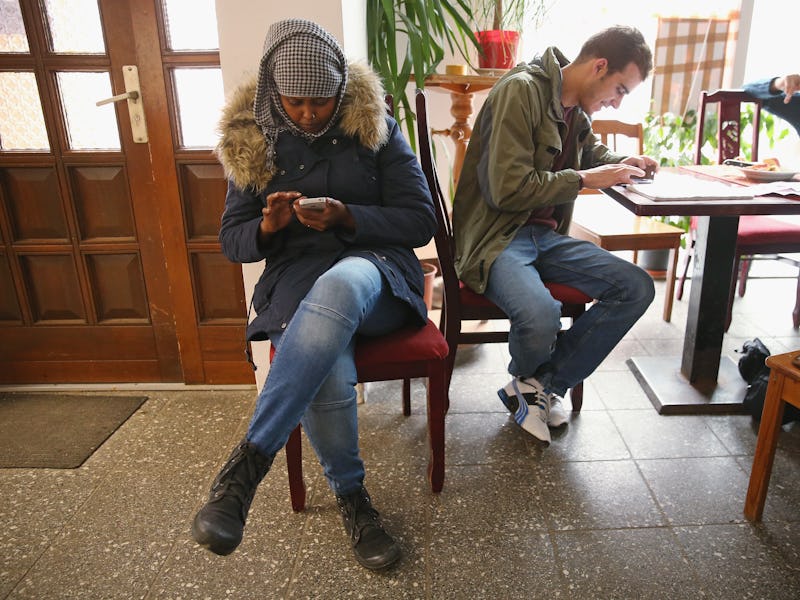Duolingo is Keeping Dying Languages on Life Support
One app can't fix the problem, but Duolingo is making a difference.

A language goes extinct every 14 days. Globalization hasn’t been kind to local cultures or their mediums of expression, but endangered languages may find a surprising digital hero in the app Duolingo.
The president of Ireland certainly thinks so. In November 2016, he publicly thanked Duolingo for helping to save the Irish language (also known as Gaelic or Irish Gaelic): While there are only 100,000 native speakers of Irish, an incredible 3 million people are using Duolingo to learn the language.
“A couple of years ago, a teenager from Ireland made a strong case to us for launching the Irish language,” Michaela Kron, the company’s PR manager, tells Inverse. “He and many others felt it was important to preserve the language and introduce it to even more people worldwide.”
So Duolingo launched an Irish course in 2014, and it’s been massively successful, particularly in the United States; Kron suspects that “many people are learning the language to better connect with their Irish heritage.”
But it’s not just Irish — it’s many other rare languages, too.
Galway on the western coast of Ireland, a place in which native Irish speakers are still concentrated.
Take Guaraní, the language of parts of South America’s Mercosur region. In Paraguay it’s spoken by about 90 percent of the population; nearly half of the rural population speaks only Guaraní, so Duolingo’s course teaches Guaraní to speakers of Spanish, Paraguay’s other official language. Even though the language is still prevalent in the middle of South America, its number of speakers is decreasing, and it’s considered to be endangered. 139,000 people are learning Guaraní on Duolingo.
Paraguay's capital, Asunción; most people who live by the Paraguay River around the city speak Guaraní.
There’s also Welsh, which Duolingo added per the request of the Prime Minister of Wales, who “wrote to us about the importance of preserving and spreading the language,” Kron tells Inverse. The number of Welsh speakers worldwide is diminishing, and only 19 percent of the Welsh population reported being able to speak the language in 2011. Duolingo’s course launched in 2015, and now 645,000 people are using the app to learn the language.
Sadly, Duolingo’s statistics may paint a falsely rosy picture about the revival of these languages. Even though 3 million people have begun learning Irish on the app, for instance, that’s also the course in which users make the slowest progress. It’s easy for anyone with regular internet access to start using Duolingo — it’s a free app, after all — but user retention is an additional concern.
Languages die because people don’t need them anymore, and that’s a fact that Duolingo can’t change. Students of an endangered language may be less motivated than students of a language that is deeply relevant to their lives.
Still, many people do have the desire and motivation to learn a rare language, and Duolingo gives them the resources to do so. It may not save dying languages, but for now, it’s helping to keep many on life support.
What about a language that’s already extinct, like Latin? Kron tells Inverse that “we don’t have plans” to add a language like that, “but may consider it in the future.”
That’s sensible: It’s more crucial to address the demand for living languages. Kron tells Inverse that Duolingo focuses on “the impact that launching a new language will have on various countries and their citizens” when choosing new courses. German, French, and Swedish courses for Arabic speakers were added in response to the Syrian refugee crisis.
Duolingo was developed at Carnegie Mellon University in Pittsburgh in in 2009 when a professor and graduate student wanted to create a language program that teaches a foreign language while translating simple phrases into documents. The app version went into private beta in 2011 and launched to the public in June 2012. Today it claims around 150 million users and is available for iOS and Android.
Duolingo tries to strike a balance between offering languages for which there is high demand and those for which there is niche demand. The company’s goal has always been to increase educational access, and their response to the Syrian refugee crisis is more in line with this mission than adding a language like Irish; but Duolingo manages to spare some energy for preserving the world’s dying languages, too.
“While we aim to teach as many languages as possible and are proud to offer certain rare/endangered languages,” says Kron, “this hasn’t been an explicit goal but rather a rewarding, unexpected benefit.”